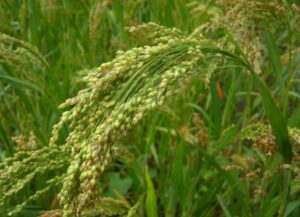Ishaya U. Gadzama & Alvaro Garcia
Brewers grains are the first solid material that remains after malted barley is fermented during the beer making process. Wet brewers’ grains (WBG) are often fed to dairy cattle because they provide rumen undegradable protein, soluble fiber and energy. Their storage life however is short due to their high moisture content (65 to 75%), making them susceptible to mold growth and spoilage.
A recent study (Hatungimana and Erickson, 2019) conducted at the Fairchild Dairy Research Center of the University of New Hampshire, USA, evaluated the storage time of WBG treated with either a commercial preservative (PRES) or salt. The commercial preservative was composed of a dry, granular, free-flowing product containing lactic acid-producing bacteria (Lactobacillus plantarum, Enterococcus faecium, and Pediococcus pentosaceus), and fermentation extracts obtained from (Aspergillus oryzae, Trichoderma longibrachiatum, and Bacillus subtilis). In addition, it contained a preservative and an antioxidant (butylated hydroxytoluene), and antifungal agents (potassium sorbate, sodium benzoate, propionic acid, acetic acid, benzoic acids, and sorbic acids). The PRES also contained monosodium phosphate as a nutrient and acidulant, and sodium silico aluminate which served as a moisture scavenger.
The nutrient composition of fresh WBG used in the experiment is in the table below. Protein, starch and fiber (NDF) content in fresh WBG were 34.9, 1.9, and 48.3% dry matter (DM), respectively. While calcium, phosphorus and potassium content were 0.22, 0.56 and 0.07% DM, respectively.
| Nutrients | Fresh Wet Brewers’ Grains (% of DM) |
| Dry Matter | 18.1 |
| Crude Protein | 34.9 |
| Neutral Detergent Fiber | 48.3 |
| Acid Detergent Fiber | 20.1 |
| Fat | 10.8 |
| Starch | 1.90 |
| Ash | 4.90 |
| Calcium | 0.22 |
| Phosphorus | 0.56 |
| Magnesium | 0.17 |
| Potassium | 0.07 |
A total of 48.50 kg of fresh WBG obtained from a brewery were used for the experiment. The WBG were treated with PRES (0.05, 0.10, and 0.15%) or salt (1.4, 2.6, and 3.8%) in 14 cylinder-shaped plastic tubs measuring 42 cm tall and 42 cm wide. The control had no PRES or salt. The authors mixed the WBG manually, using a shovel for better mixing of the treatment. The tubs were then stored in a room at 16.6°C for 28 days.
Storage time (days) had no effect on DM content of either PRES or salt treated WBG. On the other hand, treatment of WBG with either PRES or salt affected the DM content of the by-product. Salt treated WBG had higher DM content compared to PRES-treated WBG with the least DM recorded in WBG treated with 0.15% PRES. Furthermore, PRES-treated WBG had reduced yeast counts when compared to salt-treated WBG. Increased concentration of PRES in WBG, decreased yeast counts with the lowest recorded in WBG treated with 0.10% PRES. However, increasing the concentration of salt in WBG had no effect on yeast counts.
Interestingly, there was no treatment difference in mold concentrations between PRES or salt treated WBG. However, WBG treated with 3.80% salt had the lowest concentration of mold followed by WBG treated with 0.15% PRES.
From the results of this study, the treatment of WBG with commercial preservative (PRES) appears promising in reducing yeast growth. While both PRES and salt reduced mold in WBG, salt showed a greater effect. Further studies should be carried out to evaluate the feeding value of either PRES or salt treated WBG in dairy cows.
Reference:
Hatungimana, E. and Erickson, R.S. 2019. effects of storage of wet brewers grains treated with salt or a commercially available preservative on the prevention of spoilage, in vitro and in situ dry matter digestibility, and intestinal protein digestibility. Applied Animal Science. 35:464 – 475.
© 2020 Dairy Knowledge Center. All Rights Reserved.









